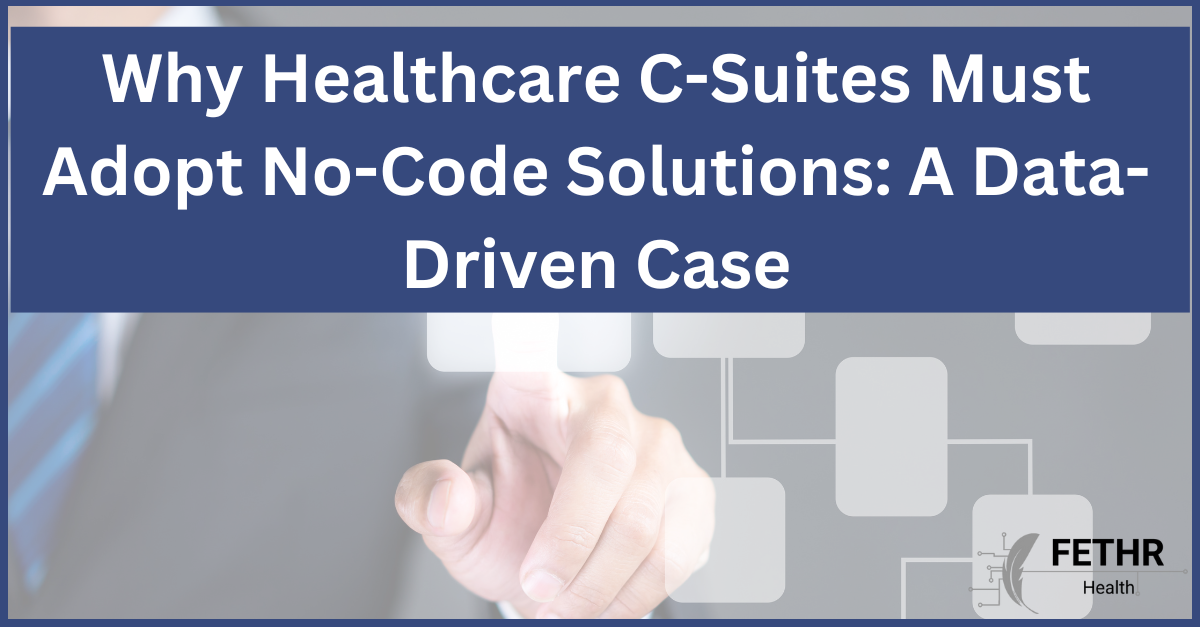In today’s healthcare environment, the pressure is mounting to deliver better patient care while reducing operational inefficiencies. This is where no-code platforms offer a transformative opportunity for healthcare leaders, from CIOs to CFOs. These platforms empower organizations to rapidly build custom applications without traditional programming, enabling agility and cost efficiency in an industry constantly adapting to change. Let’s dive into the statistics to illustrate why no-code is essential for the healthcare C-suite.
Rapid Development and Cost Savings
Healthcare organizations are experiencing an explosion in the need for specialized software, from telehealth platforms to patient data management systems. However, relying on traditional software development can be prohibitively expensive and slow. According to Gartner, by 2024, 65% of all application development will use low-code or no-code platforms, signaling a massive shift in how healthcare providers can build custom applications.
Time is of the essence in healthcare, and no-code platforms enable organizations to develop applications up to 10 times faster than traditional coding approaches (Forbes). This quick turnaround is critical when organizations need to implement new regulations or respond to emergencies like the COVID-19 pandemic. Hospitals can deploy no-code solutions in weeks instead of months, minimizing downtime and increasing responsiveness.
Additionally, the financial savings are significant. No-code platforms can reduce development costs by 70% compared to traditional methods (Tadabase). The math for hospital CFOs looking to stretch budgets while improving service delivery is straightforward: adopting no-code is a smart financial move.
Addressing the Talent Shortage
One of healthcare IT teams' most significant challenges is the shortage of skilled developers (Forbes). According to a study by IDC, there will be a global shortage of nearly 4 million software developers by 2025. Healthcare organizations compete with tech giants for talent, making scaling traditional development teams impractical.
No-code platforms address this challenge by enabling “citizen developers”—staff who may not have formal programming skills—to build and iterate on applications. This democratization of technology allows healthcare organizations to scale their IT initiatives without adding headcount, empowering teams to innovate from within (VentureBeat).
Compliance and Security
Security and compliance are top concerns for healthcare CIOs, especially regarding safeguarding patient data. No-code platforms are increasingly designed with healthcare regulations in mind. For example, many leading no-code solutions offer built-in HIPAA compliance features, making developing and deploying secure applications easier 6. This allows healthcare providers to innovate rapidly without compromising on security.
Telehealth and Remote Monitoring
The COVID-19 pandemic accelerated the adoption of telehealth services, which has become a permanent fixture in healthcare delivery. No-code platforms are ideal for building and customizing telemedicine applications, allowing healthcare providers to create tailored solutions that fit their needs. This flexibility is crucial as telehealth continues to evolve, with no-code offering an agile response to shifting regulations and patient expectations.
How Fethr Health Can Help
At Fethr Health, we specialize in helping healthcare organizations unlock the potential of no-code. Our platform enables hospitals and healthcare tech companies to build, customize, and scale applications that improve patient outcomes and streamline operations without extensive IT resources. Whether you’re looking to launch a new patient portal, automate data workflows, or implement telehealth solutions, Fethr Health provides the tools and support to get there faster, more affordably, and with built-in compliance features.
Healthcare is changing fast. No-code is not just an option—it’s the future. Let Fethr Health guide you through that future, one application at a time.

